Kala Bhoomi tries a collab

There’s nothing quite like a big moment to help reset our ‘cultural’ memories. The G20 summit is turning out to be one such moment — turning the spotlight on our cultural economy and reactivating public museums.
A few weeks ago, I was in Odisha at the Kala Bhoomi. The five-year-old crafts museum was hosting architect-designer Ashiesh Shah’s Stambh — part of the larger cultural project ‘Sustain: The Craft Idiom’, organised by the Culture Working Group (CWG) in honour of the second G20 meet in Bhubaneswar. Curated by conservationist Lavina Baldota, it was commissioned by the Ministry of Culture.
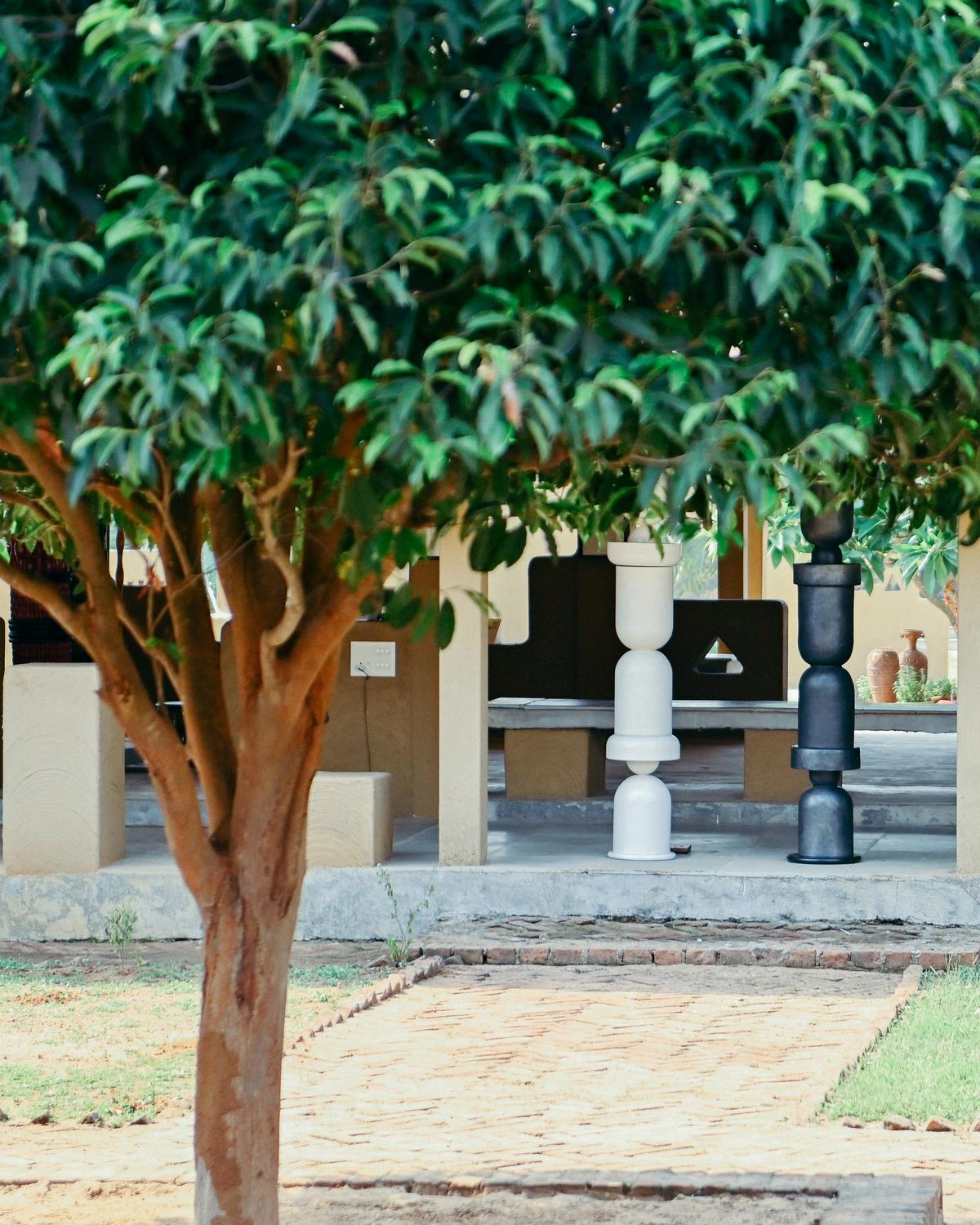
Stambhs exhibited at Kala Bhoomi
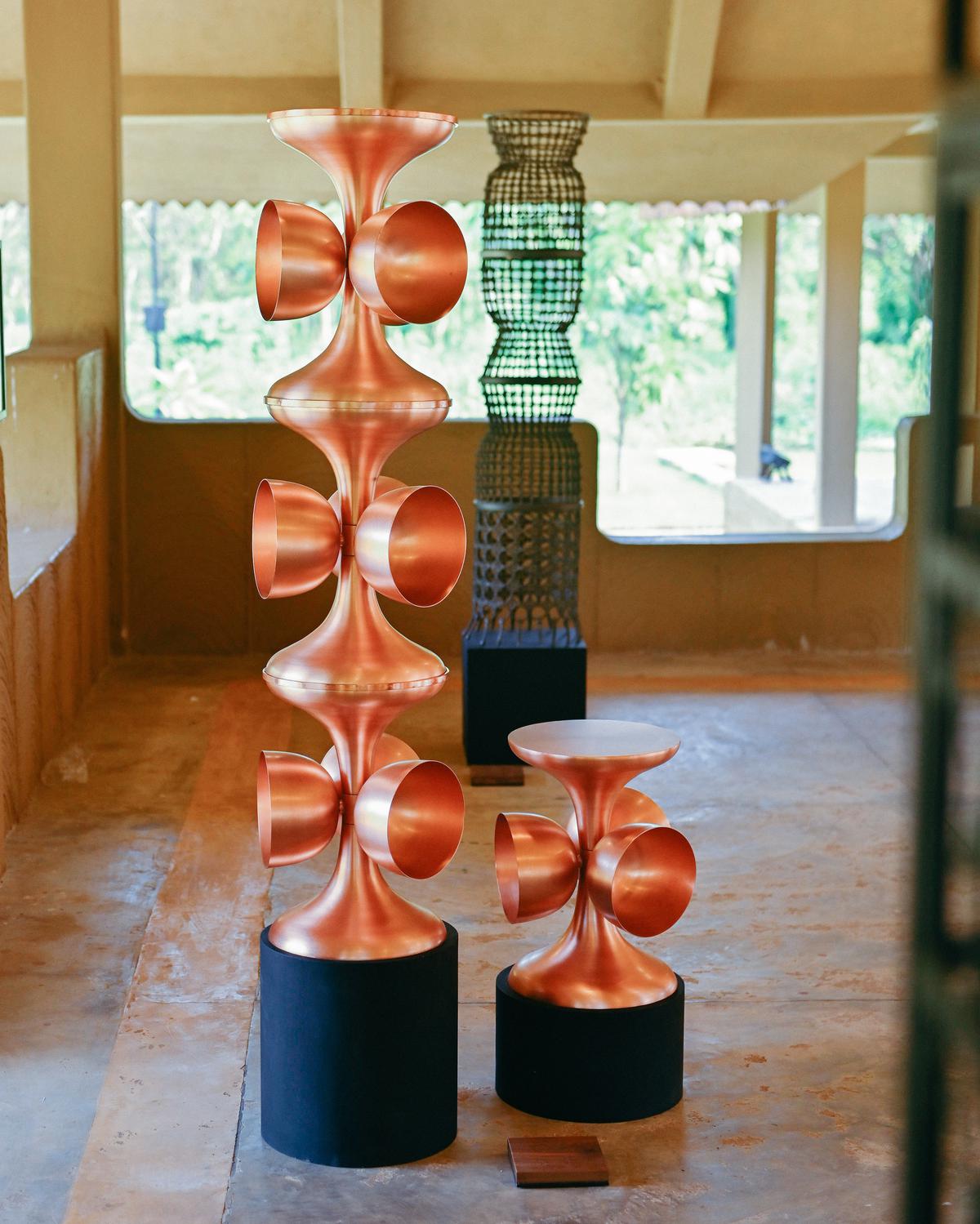
The copper dumroo and dhokra stambhs
“To host CWG meetings in iconic sites and cities of India is to draw attention, both at a national and international level, to India’s rich history and heritage,” says Lily Pandeya, Joint Secretary, G20, Ministry of Culture, over email. “The choice of hosting ‘Sustain’ at Kala Bhoomi was similar — it resonated with one of the priorities of CWG and spotlighted one of the best, yet lesser known, museums on the crafts of India.”
When the cultural ministry rang Baldota (also head of CSR at the Abheraj Baldota Foundation) to help develop an Indian crafts exhibit for the G20 meet, she knew Shah would be the perfect collaborator. The Mumbai-based designer shares her commitment to showcase traditional crafts to a new generation.
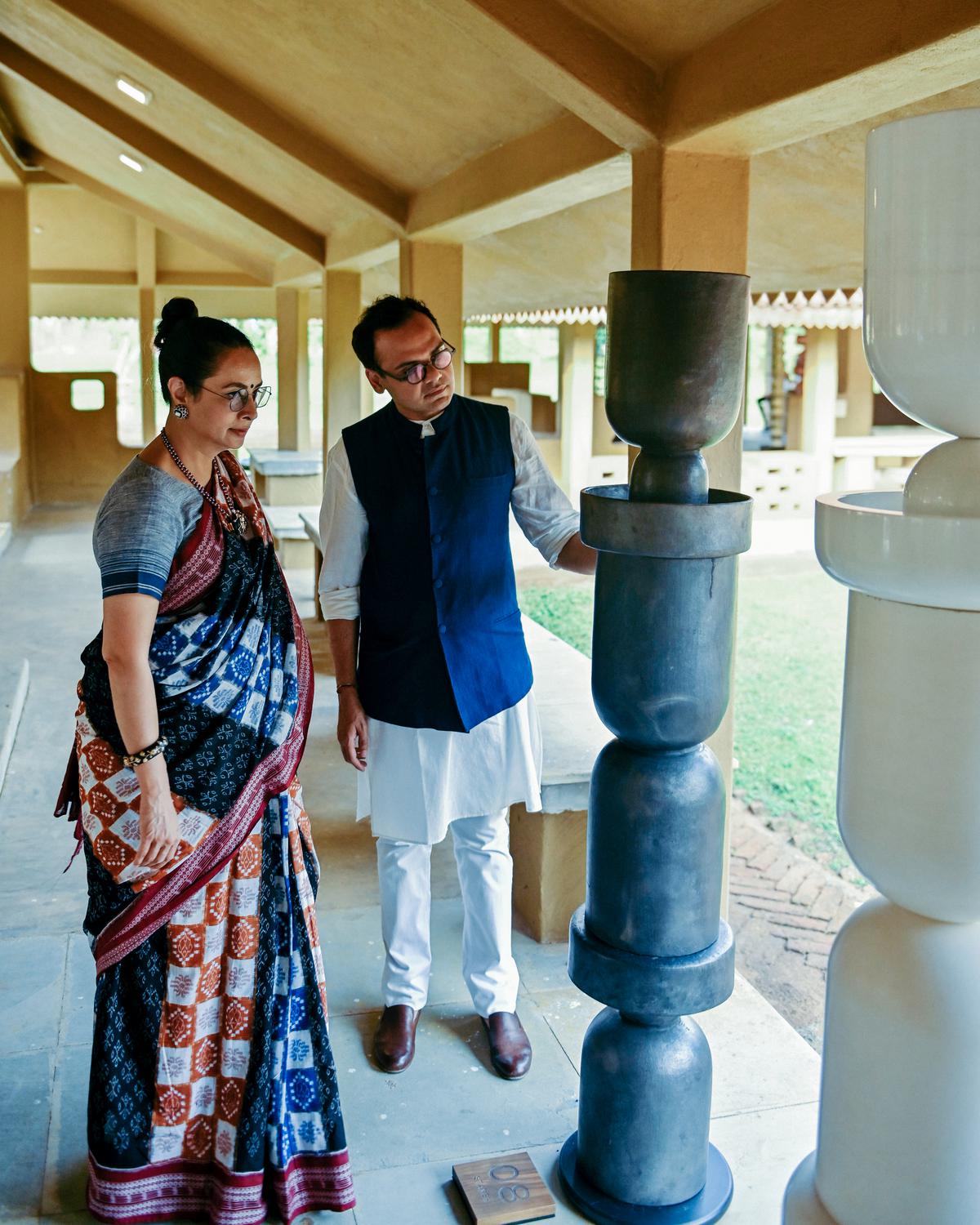
Lavina Baldota with Ashiesh Shah
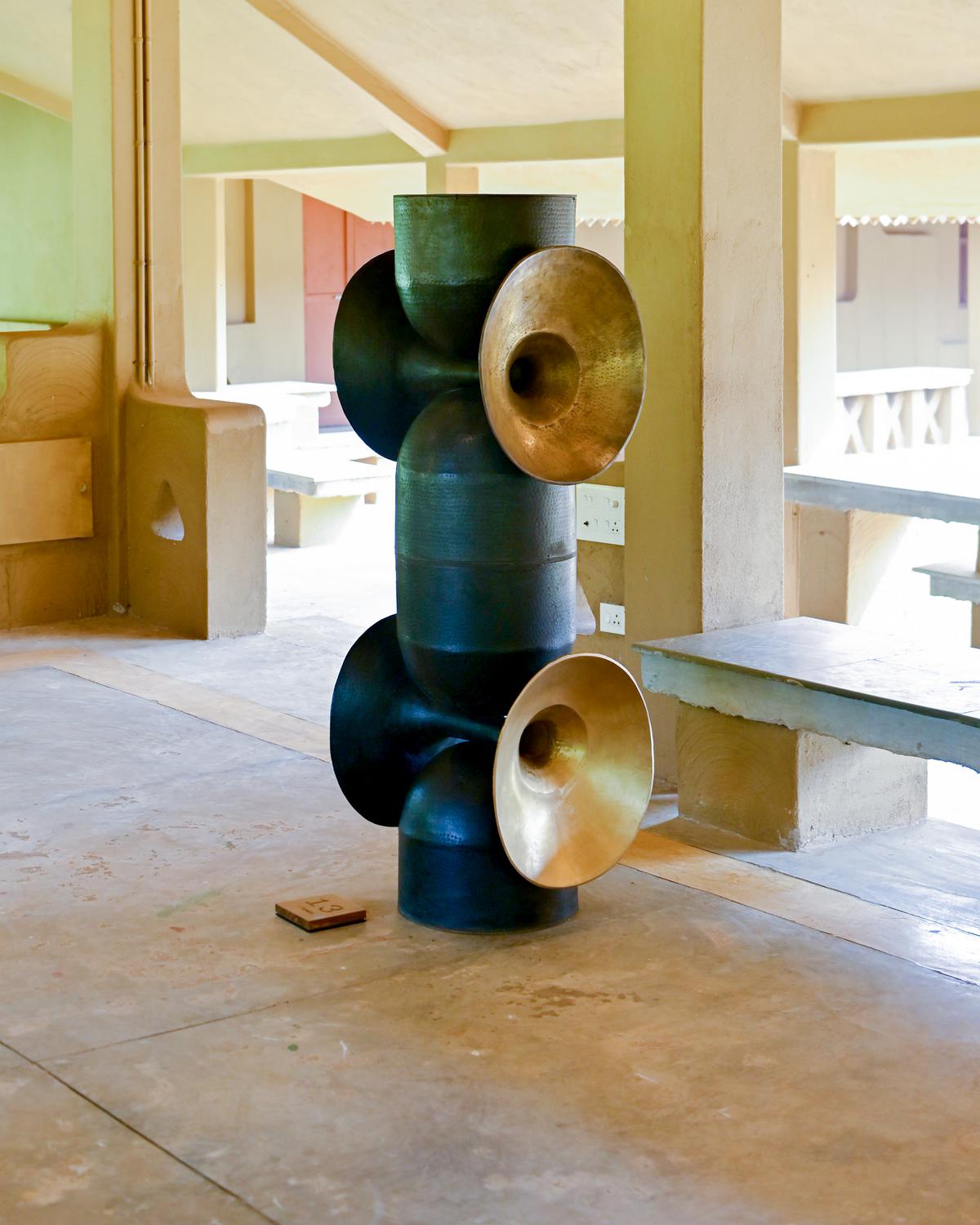
Kantilo stambh
A day at the museum
The scale of Kala Bhoomi’s 13 acres evokes a tranquil energy. Artistic collaborations such as Stambh ensure that a new audience is able to access these off-the-beaten-track gems and find a renewed appreciation for museums.
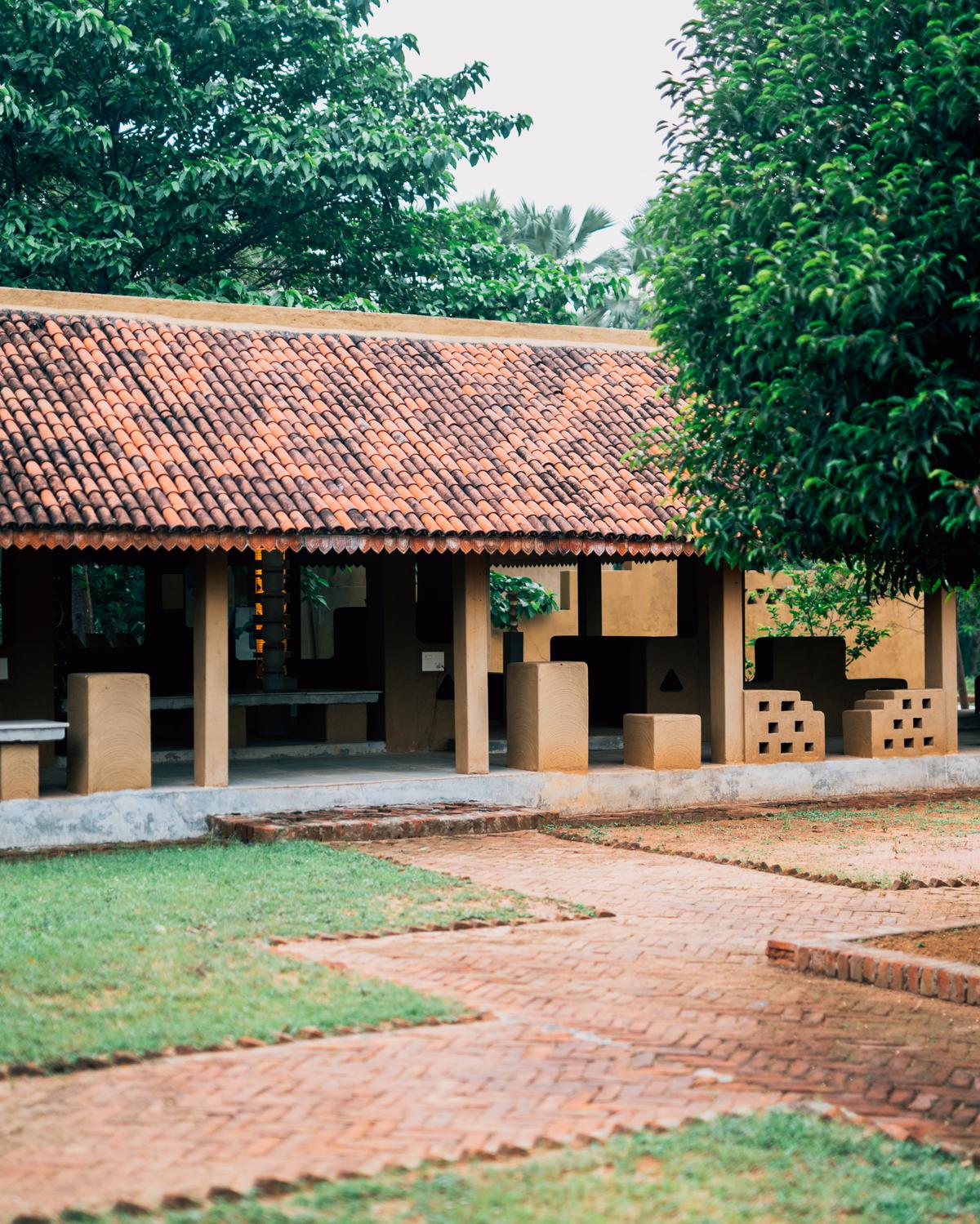
Kala Bhoomi
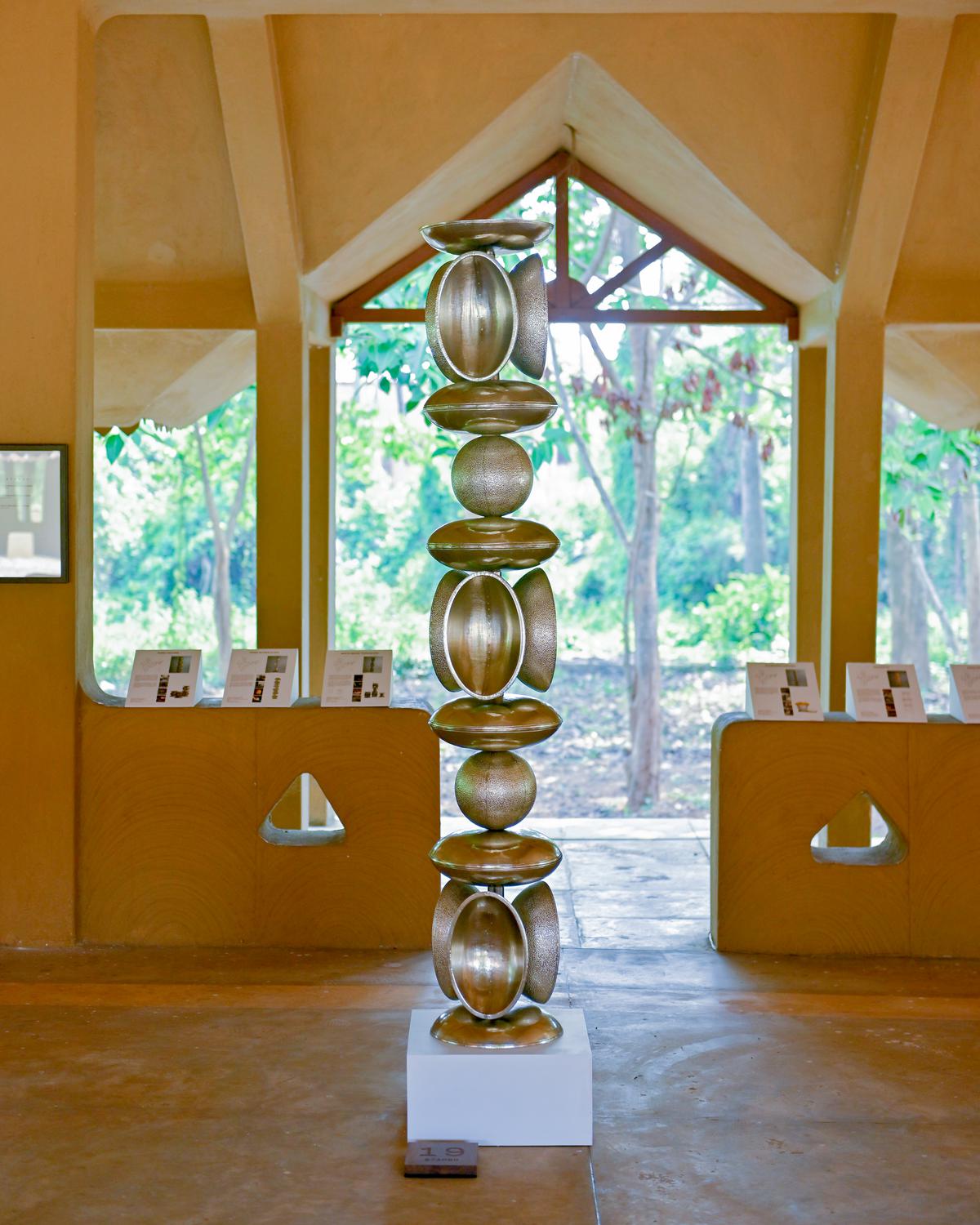
White metal patrawork stambh
“Kala Bhoomi showcases an exceptional level of artistry and celebrates the cultural richness of Odisha’s 62 distinct tribes,” explains Shah. “My attention was immediately captivated by the presence of the Gharuda Stambh, whose integration affirmed the perfect alignment between our project and the existing architecture and curatorial narrative of the museum.” He used the museum’s stunning spaces to house his 21 stambhs (cosmic pillars that, according to Vedic scripture Atharva Veda, connect heaven and Earth) for three days.
The day I visited, it was a warm 38°C, the air heavy with the fragrance of mango trees, and an idyllic pond in the centre offering peaceful interludes. Walking between the laterite stone walls hand-painted in the Pattachitra folk style, the pillars slowly come into view, displayed between the museum’s natural columns. Each is inspired by one of two dozen Indian craft traditions: from Jaipur’s blue pottery, Karnataka’s Channapatna and Naga cane weaving, to dhokra from Bastaar, longpi from Manipur and sholapith from West Bengal.
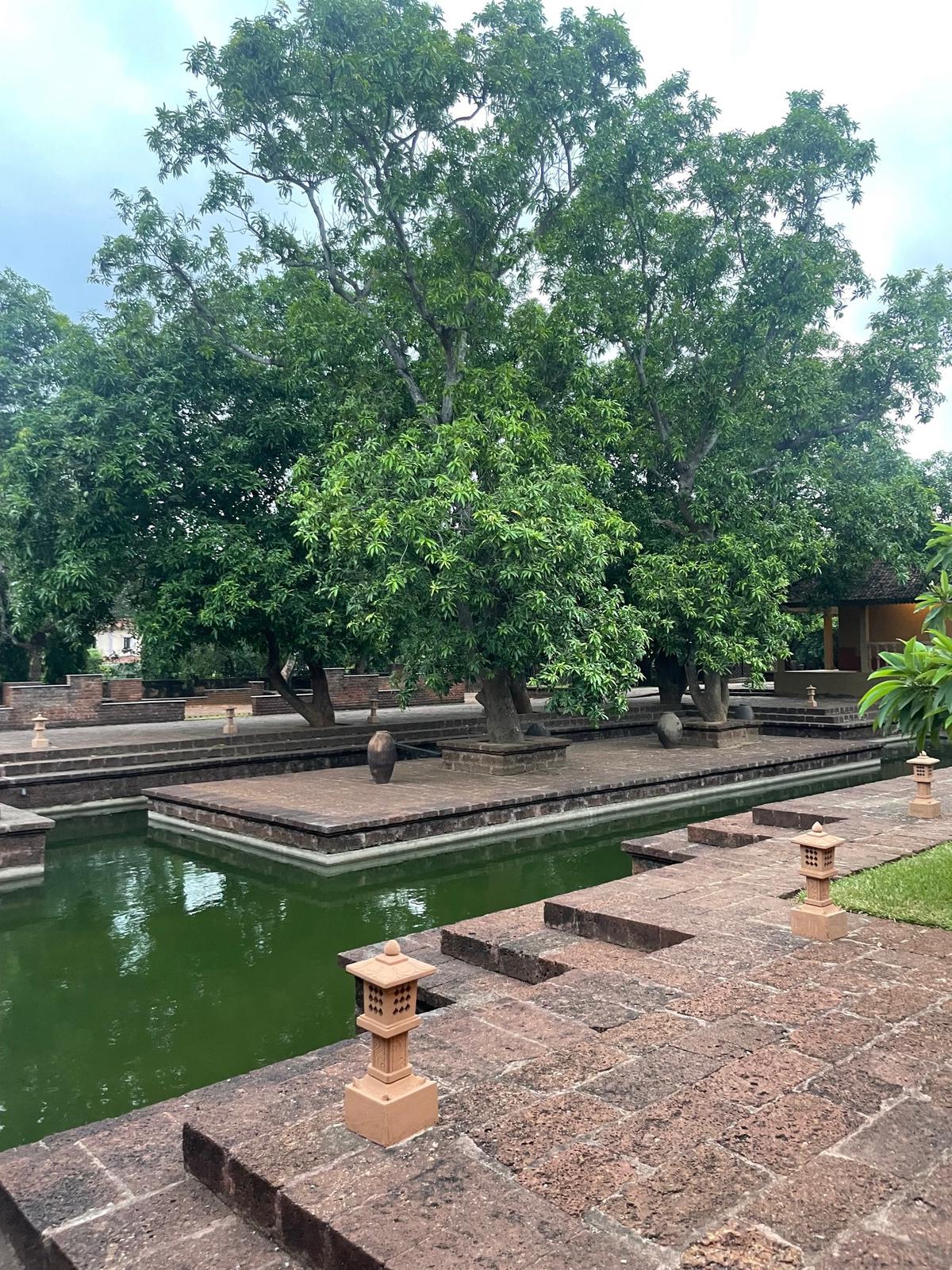
The idyllic pond at Kala Bhoomi
| Photo Credit:
Gayatri Rangachari Shah
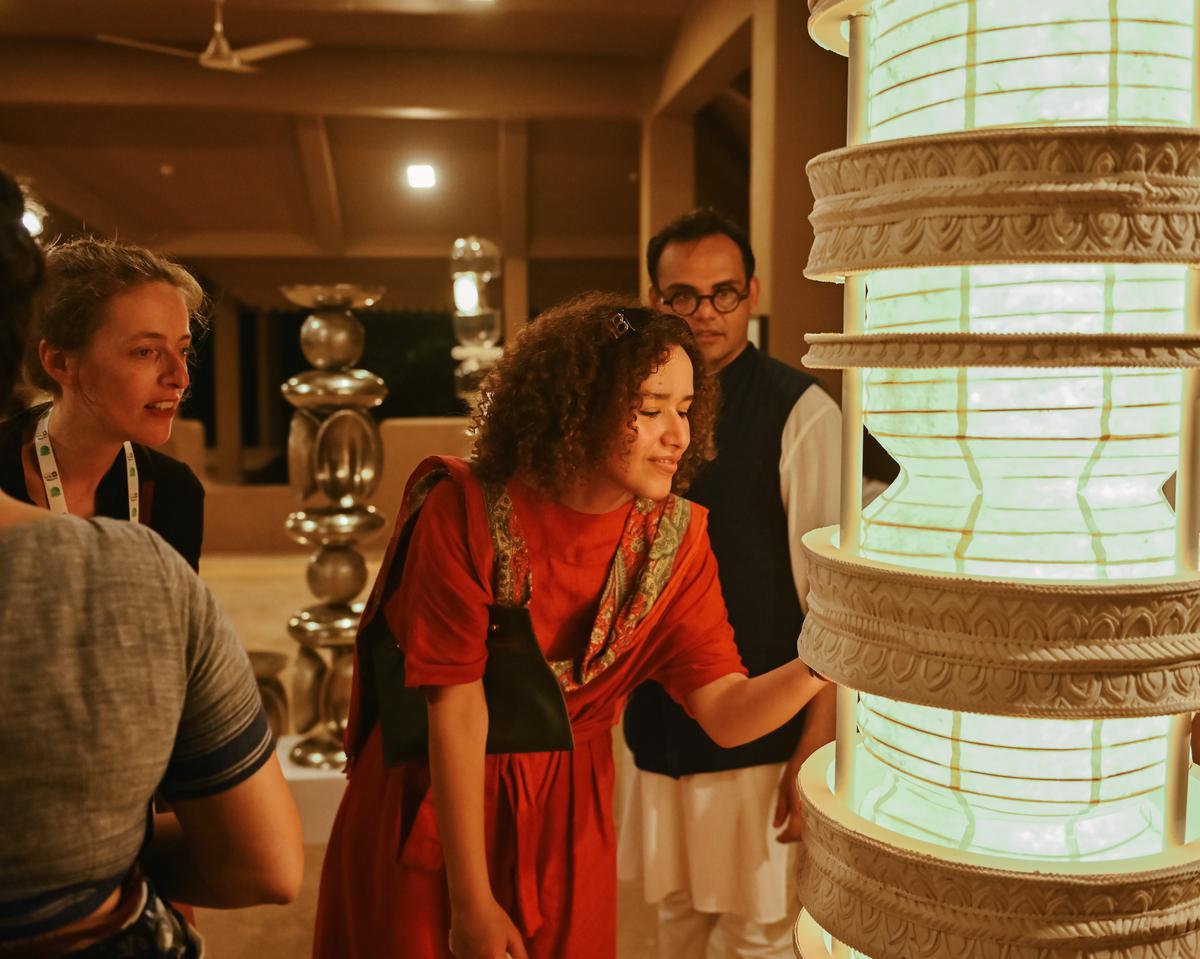
Shah shows visitors the sholapith stambh
“In the coming months, apart from national museums, we hope to engage with other museums such as the Bihar Museum in Patna, cultural spaces such as Kaladham in Vidyanagar (Hampi), and institutions such as Sandur Kushal Kala Kendra, which highlight the creative and cultural ecosystem of India.”Lily Pandeya Joint Secretary, G20, Ministry of Culture
Beyond the metros
“The height variations of the gallery walls resembled that of a stepwell, adding a layer of intrigue to the placement of the stambhs,” says Shah, a Shiva devotee who has referenced related themes in his work at the multidisciplinary collective, Atelier Ashiesh Shah, over the years. “It allowed us to scatter them, opening up spaces within them, creating a multi-dimensional experience within the curatorial journey.”
The materials chosen — all crafted between rural artisans and Shah’s specialised studios — also bridge the past and the present, traditional craft techniques and a contemporary aesthetic. Metals such as iron, copper, and silver are used alongside marble, rock crystal, terracotta, wood, and grass. Shah talks about discovering sholapith during a visit to a museum in Puri, where he spotted a maquette of the Puri Jagannath temple. Inspired, he later incorporated it as plinths for the stambhs.
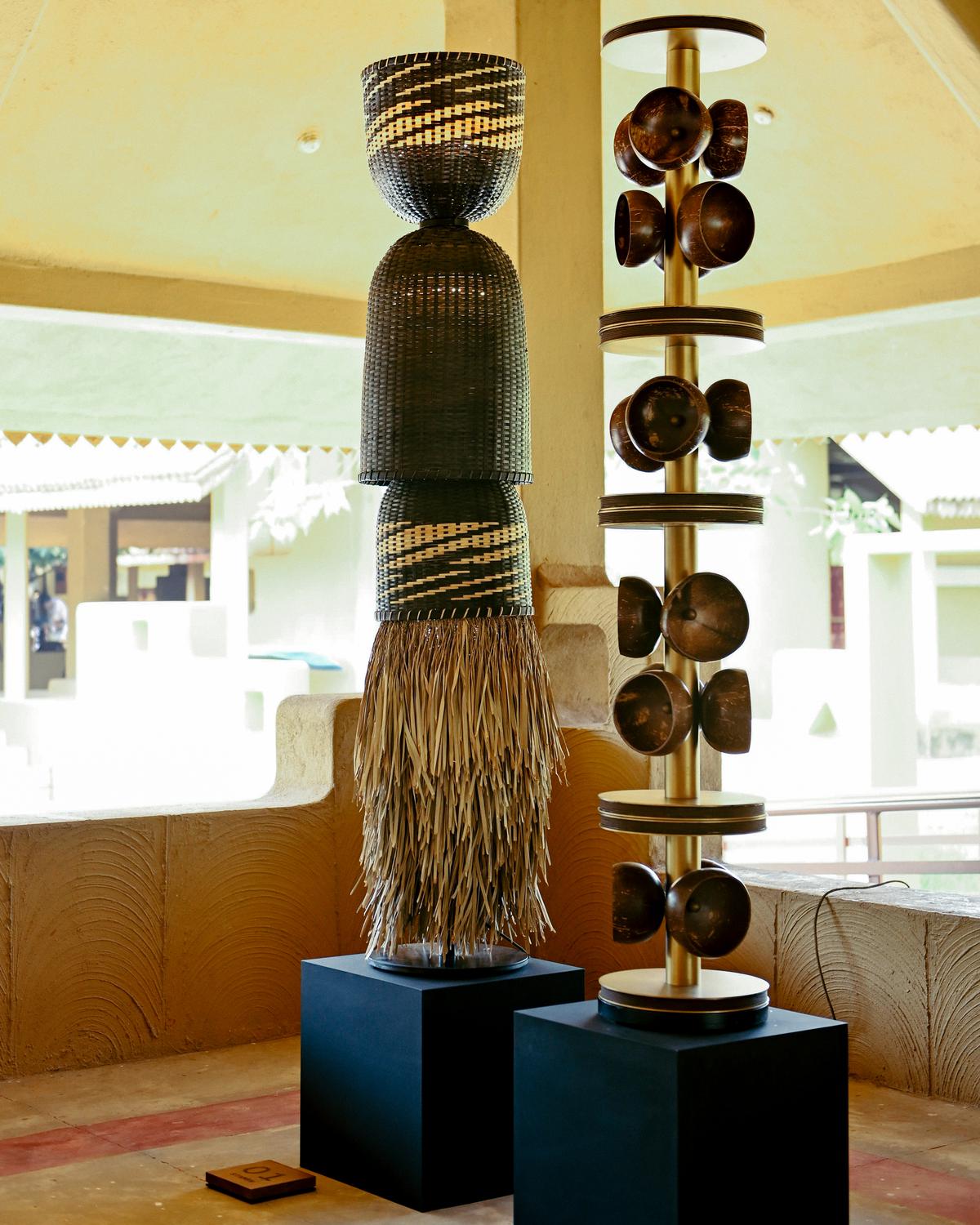
The Naga raincoat stambh and the coconut brass stambh
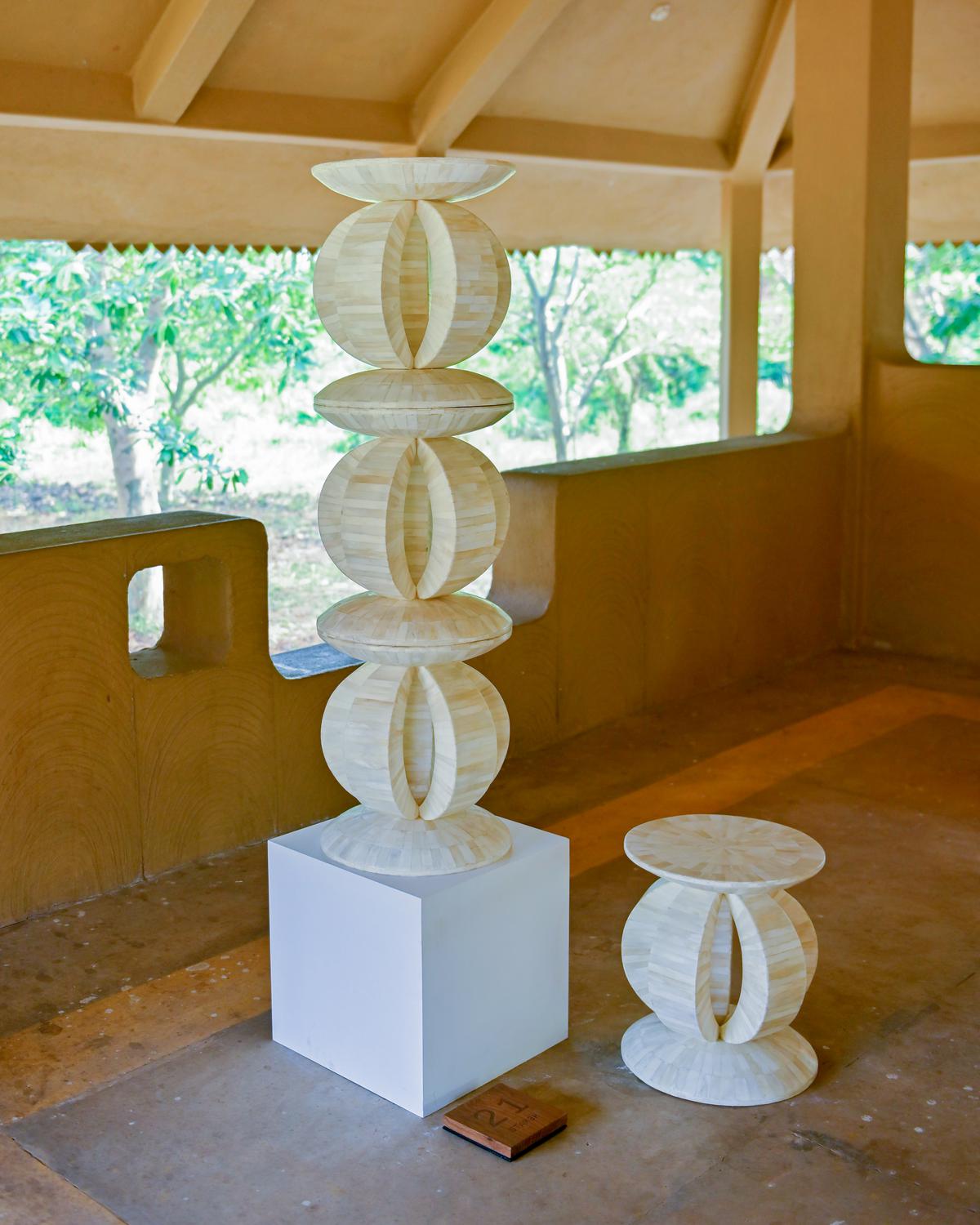
Multi-crescent bone stambh
“The theme of this G20 meet was ‘harnessing living heritage for a sustainable future’. Stambh aligned with it, giving it a contemporary language,” shares Baldota. “People perceive Indian craft as ornate, and the minimal language of Ashiesh’s work was a refreshing portrayal that appealed to global audiences.”
Interestingly, most of the guests were first timers to Kala Bhoomi. Echoing how collaborations can reinvigorate such spaces, Baldota adds that she hopes more institutions such as the Bihar Museum, the State Museum of Bhopal, Salar Jung Museum in Hyderabad, and Dakshinachitra in Chennai would also adopt such interventions.
The writer is a Mumbai-based fashion stylist.
For all the latest Entertainment News Click Here
For the latest news and updates, follow us on Google News.
